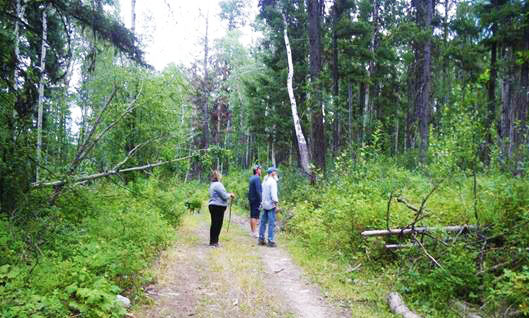The Aspen tree (Populus tremuloides), found in abundance in our watershed, is a unique tree species because it’s the only tree whose bark photosynthesizes – normally in plants the leaves perform this function. Bark photosynthesis in aspen takes place all year round. So, in the winter, even when the trees are dormant, the sugar that’s produced provides a great source of energy for deer, moose, and a diverse group of other wildlife. Because the bark is living plant tissue, not dead material like other trees, aspen act as fire suppressors in the summer months.

However, \”Forest Planning and Practices Regulation states that when a block of forest is re-growing after a wildfire or logging, broadleaf trees like aspen can\’t make up more than five per cent of trees, or two hectares — whichever total is smaller.
If there\’s too much aspen, the block must be sprayed with glyphosate, commonly better known as the active ingredient in Roundup.\” (source: James Steidle, Stop the Spray BC).
This critical natural defence against wildfires in our watershed is being destroyed by way of a government policy.
